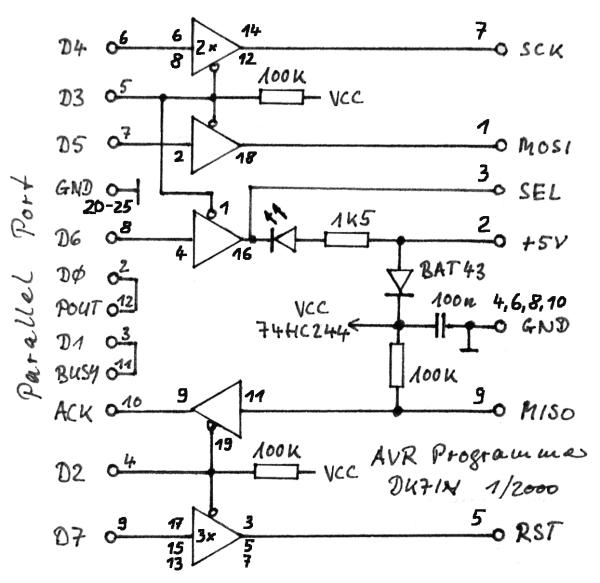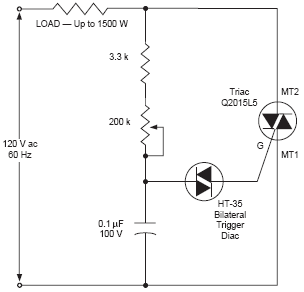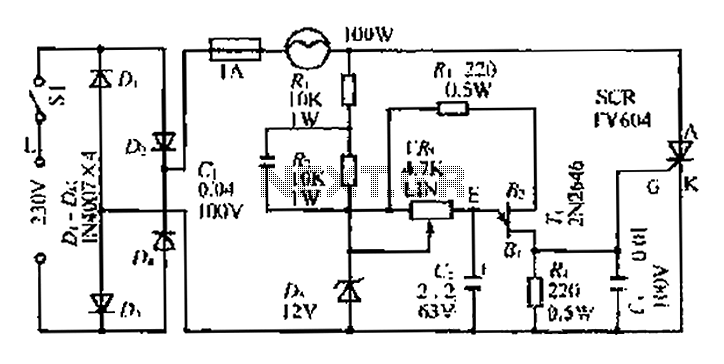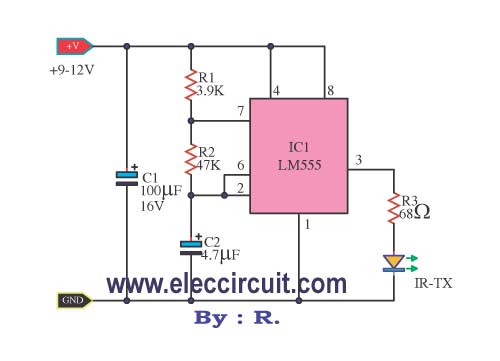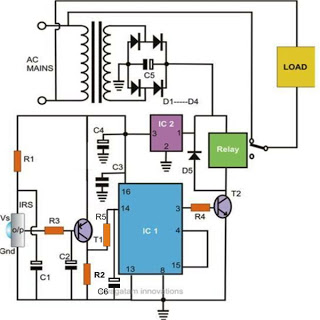
Model train speed control
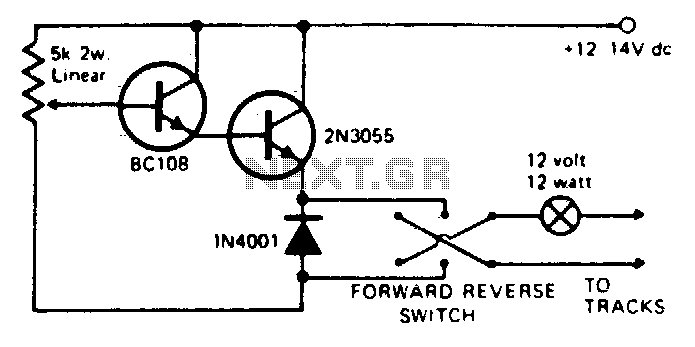
Any NPN small signal transistor can replace the BC 108 shown in the circuit. Similarly, any appropriate NPN power transistor can substitute for the 2N3055. It is essential to mount the output transistor on a suitable heat sink. Short circuit protection can be achieved by connecting a 12-volt, 12-watt bulb in series with the output. This bulb will illuminate in the event of a short circuit, effectively limiting the output current and serving as a visual alarm for short circuits.
In designing a circuit that utilizes NPN transistors, it is crucial to consider the specifications and characteristics of the components involved. The BC 108 is a versatile small signal transistor, suitable for low-power applications, while the 2N3055 is a robust power transistor capable of handling higher currents and voltages. When substituting these transistors, ensure that the chosen replacements have comparable ratings in terms of current (Ic), voltage (Vce), and power dissipation (Pd) to maintain circuit integrity and performance.
The output transistor's mounting on a heat sink is a critical consideration for thermal management. The heat sink must be appropriately sized to dissipate the heat generated during operation, thereby preventing thermal runaway and ensuring reliable performance. The thermal resistance between the transistor junction and the ambient environment should be minimized to enhance heat dissipation.
Incorporating short circuit protection into the circuit design is essential for safeguarding the components from damage due to excessive current. The use of a 12-volt, 12-watt bulb in series with the output serves a dual purpose. Firstly, it acts as a current limiter by introducing a resistance that restricts the flow of current during a short circuit condition. Secondly, the illumination of the bulb provides a clear visual indication of a fault condition, allowing for immediate identification and troubleshooting.
To implement this protection mechanism effectively, the circuit should be designed to ensure that the bulb operates within its rated voltage and power limits. The placement of the bulb in the circuit should be such that it does not interfere with the normal operation of the output transistor under standard load conditions. Additionally, consider the response time of the bulb to ensure it activates promptly in the event of a fault.
Overall, careful selection of components, proper thermal management, and effective fault protection are vital aspects of designing a reliable and efficient electronic circuit utilizing NPN transistors.Virtually any NPN small signal transistor may be used in place of the BC 108 shown. Likewise any suitable NPN power transistor can be used in place of the 2N3055. The output transistor must be mounted on a suitable heat-sink. Short circuit protection may be provided by wiring a 12 volt 12 watt bulb in series with the output This will glow in event of a short circuit and thus effectively current-limit the output, it also acts as a visual short-circuit alarm. 🔗 External reference
In designing a circuit that utilizes NPN transistors, it is crucial to consider the specifications and characteristics of the components involved. The BC 108 is a versatile small signal transistor, suitable for low-power applications, while the 2N3055 is a robust power transistor capable of handling higher currents and voltages. When substituting these transistors, ensure that the chosen replacements have comparable ratings in terms of current (Ic), voltage (Vce), and power dissipation (Pd) to maintain circuit integrity and performance.
The output transistor's mounting on a heat sink is a critical consideration for thermal management. The heat sink must be appropriately sized to dissipate the heat generated during operation, thereby preventing thermal runaway and ensuring reliable performance. The thermal resistance between the transistor junction and the ambient environment should be minimized to enhance heat dissipation.
Incorporating short circuit protection into the circuit design is essential for safeguarding the components from damage due to excessive current. The use of a 12-volt, 12-watt bulb in series with the output serves a dual purpose. Firstly, it acts as a current limiter by introducing a resistance that restricts the flow of current during a short circuit condition. Secondly, the illumination of the bulb provides a clear visual indication of a fault condition, allowing for immediate identification and troubleshooting.
To implement this protection mechanism effectively, the circuit should be designed to ensure that the bulb operates within its rated voltage and power limits. The placement of the bulb in the circuit should be such that it does not interfere with the normal operation of the output transistor under standard load conditions. Additionally, consider the response time of the bulb to ensure it activates promptly in the event of a fault.
Overall, careful selection of components, proper thermal management, and effective fault protection are vital aspects of designing a reliable and efficient electronic circuit utilizing NPN transistors.Virtually any NPN small signal transistor may be used in place of the BC 108 shown. Likewise any suitable NPN power transistor can be used in place of the 2N3055. The output transistor must be mounted on a suitable heat-sink. Short circuit protection may be provided by wiring a 12 volt 12 watt bulb in series with the output This will glow in event of a short circuit and thus effectively current-limit the output, it also acts as a visual short-circuit alarm. 🔗 External reference
Warning: include(partials/cookie-banner.php): Failed to open stream: Permission denied in /var/www/html/nextgr/view-circuit.php on line 713
Warning: include(): Failed opening 'partials/cookie-banner.php' for inclusion (include_path='.:/usr/share/php') in /var/www/html/nextgr/view-circuit.php on line 713
